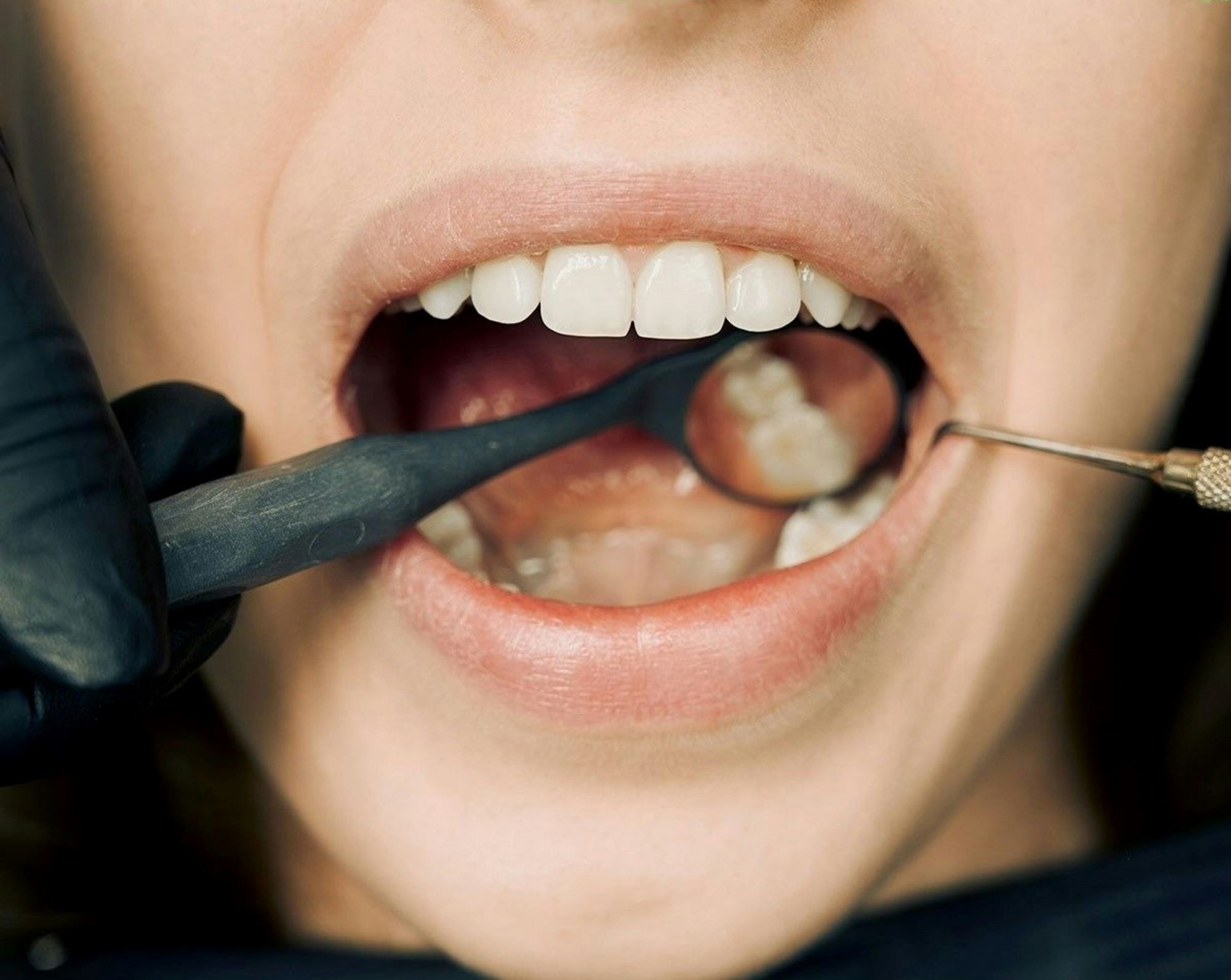
22 Feb Common Signs of Unhealthy Gums
When we say periodontitis or gingivitis, what do you think of?
If you have any frame of reference for gum disease at all, it’s likely only from posters that you’ve mindlessly looked over while a hygienist cleaned your teeth. But gum disease is real, common, and often quite painful. Today we’re going to tackle how to recognize the onset of this tricky condition, so that it doesn’t take you by surprise. We’ll also note some of the risk factors for gum disease, as well as how you might go about reducing your own risk.
What are healthy gums like?
To identify unhealthy gums, it helps to know what gums are supposed to look and be like. When your gums are healthy, they can vary in color—some people’s gums are a light pink, while others have dark pink or brown gums. However, signals of unhealth include your gums changing color—for instance, turning dark red or purple.
Healthy gums should also fit snugly to your teeth, not be loose or receding. They ought to be firm to the touch.
How can I tell I have unhealthy gums?
When your gums have gotten to be unhealthy, this is what we call gum disease. Gum disease exists in various forms of severity. The earlier, more common stage is known as gingivitis.
Gingivitis is quite normal. The Cleveland Clinic reports that almost half of the adults in the US over age 30 are suffering from at least some degree of the condition. This buildup of plaque and bacteria is typically brought on by a failure to properly care for your teeth and gums. Of course, what you probably want to know is,
How can I recognize if I have gingivitis?
If you are suffering from gingivitis, you’ll almost always have some sort of discomfort to serve as a signal. Common signs of gingivitis include:
- Bad breath (halitosis)
- Irritated, inflamed gums
- Overly sensitive gums
- Gums that bleed easily
- Receding gums
If you are experiencing some or all of these symptoms, it’s important to address that with your dentist right away. Leaving gum disease unchecked allows it to progress and become even more difficult to stop.
Another reason to address it with your dentist right away is that those symptoms could also indicate that the problem has progressed beyond just simple gingivitis. The more serious stage of gum disease is known as periodontal disease, an undesirable condition that the CDC ranked among the two biggest threats to dental health. When you have periodontal disease, your gums don’t just swell and turn red and bleed easily; they begin to pull away from the bone. You may also experience pain as you chew, a bad taste that lingers no matter what you do, or teeth that are overly sensitive or in pain. If you’re noticing a change in the way your teeth fit together when you bite or the way that your dentures fit, the CDC warns that this could also be a signal of periodontal disease.
What caused my unhealthy gums?
If you’re suffering now due to painful, swollen, and diseased gums, you might be wondering what caused the problem. The elements that the CDC lists as risk factors for gum disease include:
- Smoking
- Diabetes
- Poor oral hygiene
- Stress
- Heredity
- Crooked teeth
- Underlying immuno-deficiencies—e.g., AIDS
- Fillings that have become defective
- Taking medications that cause dry mouth
- Bridges that no longer fit properly
- Female hormonal changes
All of these things may contribute to unhealthy conditions in which gum disease can thrive. If any of these things are true of your situation and causing you trouble, it’s worth asking:
How can I fix unhealthy gums?
No matter what stage of gum disease you’re struggling with, there are still measures that you can take to help promote the health and vitality of your gums. It’s important to take care of them—they’re the only set you get! To prevent the progression of gum disease and combat any existing gum disease, we recommend:
Maintaining good oral hygiene.
While it may seem to be the cure-all advice you receive from your dentist, it’s true. Poor oral hygiene is one of the biggest contributing factors to diseased gums; you can combat that by keeping your mouth in tip-top shape. Brush twice a day for two minutes each time, and floss at least once a day, preferably after eating.
Visiting your dentist regularly.
You should see the dentist at a minimum of once a year, but the CDC recommends going more frequently if you have any of the risk factors mentioned previously.
Mitigating the risk factors you can control.
Obvious as this step may seem, it’s worth noting. Smoking, for instance, is a significant risk factor for gum disease. Reducing your risk for gum disease should be an excellent encouragement to break the habit.
Good overall health habits.
Remember—your oral health isn’t somehow disconnected from the rest of your body. A diet of unhealthy food and sugary or acidic drinks will promote the very bacteria that gum disease thrives on. As the saying goes, “Garbage in, garbage out.” On the contrary, habits like controlling blood sugar if you have diabetes (Mayo Clinic), eating healthy food, and drinking plenty of water will contribute to the overall healthy lifestyle that keeps gum disease far away.
Unhealthy gums can be recognized most easily by their redness, swelling, sensitivity, and recession. There are several factors that put you at risk for gum disease, but with some diligence, you can combat that risk. If you have a question about your risk for gum disease or fear you already have it, contact our office today to

About Our Team
Our team of dental experts has well over 30 years of combined experience in the field of dentistry. To learn more about them, please visit the team pages for Hephzibah, Washington Road, Summerville, and Medical District locations.

Sorry, the comment form is closed at this time.